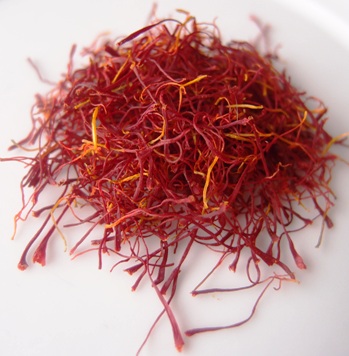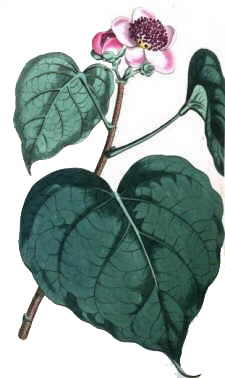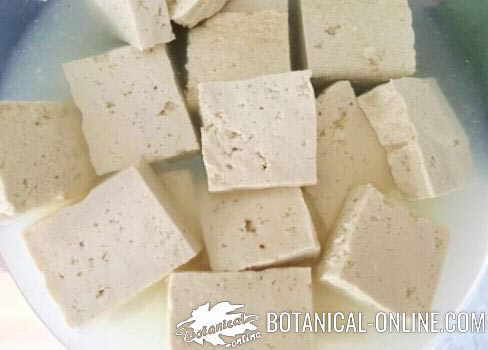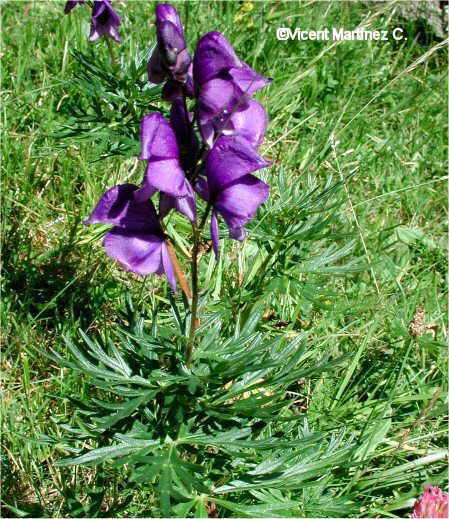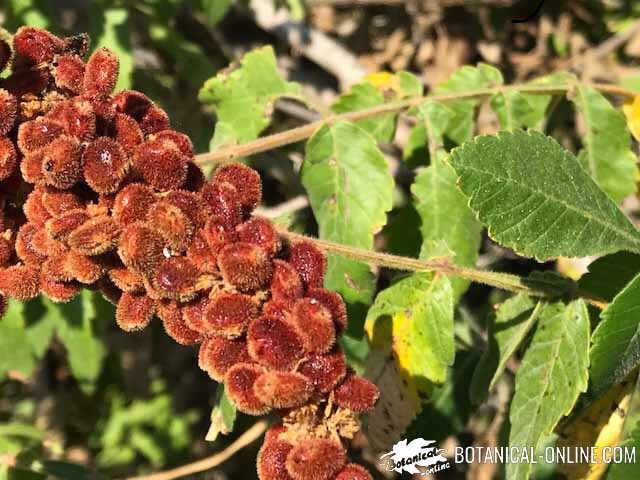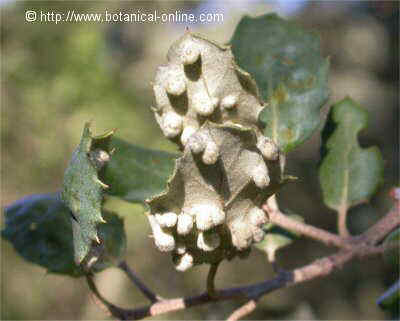Contents
Medicinal and nutritional benefits of holm oak
Components of holm oak
The main components of holm oak are:
- Acids: palmitic, stearic, oleic and linoleic acid (Fruit = acorn)
- Starch: + 60% (fruit = acorn)
- Sugars: + 4% (Fruit = acorn)
- Monoterpenes: alphapinene, betapinene, sabinene, myrcene (leaves)
- Tannins (Bark)
- Tannic and gallic acids (gills)
- Pectin (Fruit = acorn)
- Minerals: calcium, potassium, magnesium, phosphorus, manganese, zinc, nitrogen, copper, sodium (Plant)
- Water (plant)
MEDICINAL PROPERTIES OF HOLM OAK
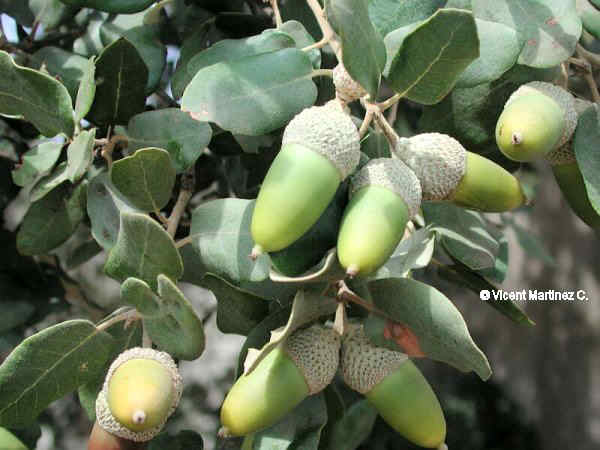 Photos of holm oak (Quercus ilex). Detail of the leaves and the fruits (acorns)
Photos of holm oak (Quercus ilex). Detail of the leaves and the fruits (acorns)
The medicinal properties of this tree come from its wealth in tannins, especially its acids. Tannins play a healing role in accelerating the wound healing and performing hemostasis (stopping the flow of bleeding).
The healing occurs by the formation of crusts by binding proteins with tannins and create a “dry” environment that prevents bacterial growth. By constricting blood vessels, they help blood clotting and, therefore, they contribute to the healing of wounds.
Besides, tannins have many more uses in herbal medicine for external use. These principles have applications in cosmetics and are useful for external skin care, helping to cure pimples, blackheads or contributing to the elimination of the fat in the skins that present excess of it, etc.
Holm oak internal preparations
Preparations for internal use of this plant can be toxic so they can only be taken under medical supervision. (See toxicity of the oak). Holm oak can be used for the treatment of the following anomalies:
Digestive system: Among the main diseases that can be remedied with this plant we have:
- Inflammations of the intestine: Its tannin content turns out ideal for the treatment of enteritis (inflammation of the intestine), contributing to reduce the inflammation and to diminish pain. (Decoction of about 50 gr. of dry crust by liter of water. During one week take a spoonful from this decoction sweetened with honey before going away to sleep) (Infusion of average teaspoon of dry leaves by water cup. To drink three cups to the day between the main meals)
- Indigestion: To combat bad digestions the preparations with this plant can help to digest food better. (Roast a handful of acorns, grind them very fine and make coffee roasted acorn powder. You should not exceed two cups a day)
- Diarrhea: The astringent properties of tannins to stop diarrhea is evident in the preparations used for this purpose. (Decoction of two tablespoons of dried bark per liter of water. Take a couple of cups a day) (Eat fresh sweet acorns)
External use remedies with holm oak
Externally, the astringent properties of oak bark can be used to stop bleeding and heal wounds, while preventing they to become infected.
The antibacterial function of tannins is mainly produced by depriving microorganisms of the suitable environment to develop. These properties have been used in the external treatment of many physical problems such as:
- Eczemas: Eczema generally presents a dry and reddened character, but there are cases where eczema occurs in the presence of liquids. It normally takes place in the elbow, behind the knees, hands or feet. In these cases the use of preparations of this plant helps to “dry up” these affected areas. (Make a decoction of dried bark of 4 tablespoons per liter of water. Apply a compress soaked with a liquid in this decoction on the affected area)
- Sore throat: Gargling with the decoction made from the bark of this plant can help reduce inflammation of the throat and promote healing by not allowing the development of microorganisms that can cause infection (Decoction for about 6 minutes a couple of tablespoons of dried bark per liter of water. Make abundant gargling with the liquid of this decoction. Do not swallow the liquid.)
- Pharyngitis: The same previous treatment is useful in the treatment of pharyngitis.
- Hemorrhoids: The same properties make it very effective in the treatment of hemorrhoids. (Decoction of 3 tablespoons pf dried bark per liter of water. Pour a couple of liters in a bowl or bidet and make a sitz bath for a few minutes)
- Nosebleed: The genus Quercus (holm oak, oak, etc.) contains species whose bark has very prominent astringent properties. A remedy to prevent bleeding from the nose is to crush a piece of dried bark of oak in a mortar, grind it and inhale a little bit through the nose.
- Wounds: The ability of this plant to stop bleeding and to disinfect wounds can be used to treat wounds in general. (Make a decoction of dried bark 4 tablespoons per liter of water. Apply a compress soaked with a liquid in this decoction on the wound) The same preparation is very useful in the treatment of varicose veins, especially when there are ulcers in them (varicose ulcers)
- Metritis: The use of this plant can help to shrink the uterus. (Washing the vagina with the decoction of 40 gr. Of bark per liter of water)
- Metrorrhagia: In case of bleedings that take place in periods outside menstruation, vaginal irrigations can be applied with the resulting liquid of the decoction of 4 spoonfuls of dry bark per liter of water.
- Chilblains: The use of this plant can help reduce inflammation and decrease chilblains intense itching. (Decoction of 200 gr. of dried bark for 4 liters of water for ¼ of an hour. Let it cool until it gets warm and perform hand or foot bath with the liquid)
- Food odor: (Make a decoction with a handful of dried oak bark per liter of water for 15 minutes. Wash the smelly feet with the liquid to reduce excessive sweating, especially in summer. Very suitable for athletes, runners, cyclists or all those people who generally show sweaty feet)
- Itching and vaginal irritation: in cases of excessive vaginal itching, the external use of this plant can help reduce discomfort. (Apply to the affected area the liquid from the decoction of 4 tablespoons of dried bark per liter of water.) (Apply douching with the liquid from the decoction of 4 tablespoons of dried bark per liter of water.)
Toxicity of oaks
Holm oaks and related plants of the genus Quercus (oak, kermes oak, holm oak, etc) have a very high amount of tannins, especially in the cortex, where they can reach up to 20% and a smaller proportion in the leaves and fruit (acorns)
The tannins are irritating for intestinal mucosa and can cause vomiting and even ulcerations. It is recommended, therefore, to use preparations for internal use only under supervision of the physician and never exceed the recommended dose.
Contraindications of oaks
- Preparations in case of gastritis or gastroduodenal ulcer should never be taken internally.
- The treatments of preparations for internal use will not have to extend over the 4 days.
- The use of preparations with this plant can be contraindicated in case of taking supplements of pectin, iron or some preparations with alkaloids.
- For external use, the application should not be performed on very large wounds or extend them beyond the 15 or 20 days.
- Nor should baths with these preparations of this plant when patients present infections, fever or heart problems.
![]() More information on holm oak.
More information on holm oak.

